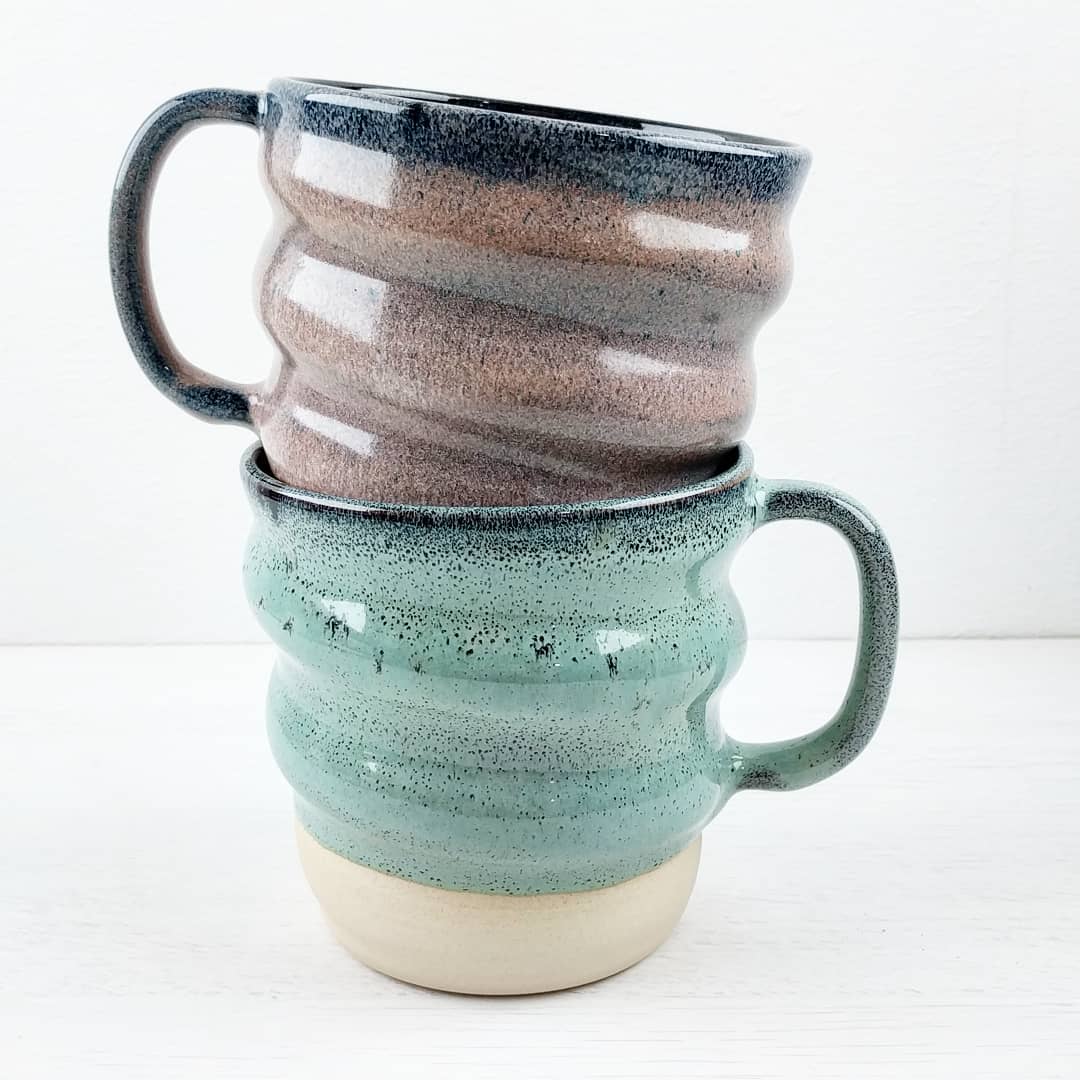
I’m a firm believer that we don’t always need more stuff but what we do have should, as Marie Kondo would say, spark joy. After all, what you want for your morning coffee isn’t a dozen plain mugs. It’s a single mug that will make the start of the day better. Drinks just taste better out of your favourite mug.
I feel Dieter Rams summed it up perfectly with ‘Less, but better’.
All my work is wheel thrown stoneware.
This means each piece is individually thrown on a pottery wheel. I aim to throw each piece identically, but they will all have slight variation as they pick up character throughout the making process. Most of my work is in either a warm white or a rich brown coloured clay, and these different bases change the nature of the glazes applied over them.
It gets dried slowly, trimmed, and once fully dry it gets very carefully loaded into an electric kiln and fired to 1000c. This changes the clay into ceramic, permanently setting the shape. Up until this point the piece could always be reformed into the raw clay by adding water, but the bisque firing is the first irreversible process.
Next comes my favourite part, glazing. I make all my own glazes. Some are from recipes created and shared by other potters, most are recipes I’ve created (and shared) myself, but all of them are mixed up from raw ceramic ingredients. I always try and create effects with them where there’s a fundamental change in the firing, whether that’s literally flowing down the piece (like Peacock Eye), or layered glazes bubbling up through each other (like Static). Those patterns are created by the glaze itself, so each one captures a unique moment in the kiln and can never be recreated exactly. The glazes are a glass that becomes liquid in the firing, so what you’re seeing is the movement that occurred at around 1200c becoming frozen forever as the kiln cools.
Hi!
I'm Joe Thompson, a graphic designer turned self-taught ceramicist. For the last couple of years I've been making unique handmade ceramics out of a tiny studio in the UK.
I got started in an unusual way. When planning our wedding, my wife and I wanted to have something to send out as our Save the Dates that our guests would actually keep and use. We decided that ceramic coasters would be the ideal solution. When we couldn’t find anywhere offering what we had in mind, and despite never having worked with clay before, I decided to make them myself. I borrowed a kiln, 3D printed a stamp of my artwork, and used a rolling pin and a cookie cutter to make them on the kitchen counter.
They worked so well, and I had enjoyed the process so much, that I looked into whether I could come up with a more commercially viable production process. I realised that a CNC mill could easily cut bisqued earthenware disks so I could produce individually personalised coasters. Around this time the company I worked at as a graphic designer were looking to make redundancies, so I took the opportunity and used the redundancy money to invest in the equipment to start producing them full time.
If you scroll back to my first Instagram posts you’ll see the earthenware coasters I was producing.
The business grew steadily over the first few months and I quickly reached the limit of what my little CNC mill could reasonably produce in a day. I had been using the time I spent running the mill to learn about the other aspects of ceramics, and started hand building geometric forms.
I bought a kiln capable of firing to higher temperatures and started working with stoneware. I knew that this higher temperature opened up a vast range of colour possibilities and used John Britt's Complete Guide to Mid-Range Glazes to start producing my own. I was fortunate enough to be given a wheel, and taught myself to throw using videos on YouTube. I have stopped making the earthenware coasters and work with wheel thrown stoneware, but it was a great introduction into the fascinating, challenging, and constantly evolving artform of ceramics.
I continue to learn and experiment with new ideas and techniques, and enjoy the infinite variations possible within this art form.
The studio name comes from the history of the site it's stood on, which was a 16th century forge.
Thank you for your interest, please get in touch if you have any comments or questions or head over to the Shop to have a look at what I make.
Joe

Large Bowl - Peacock Eye